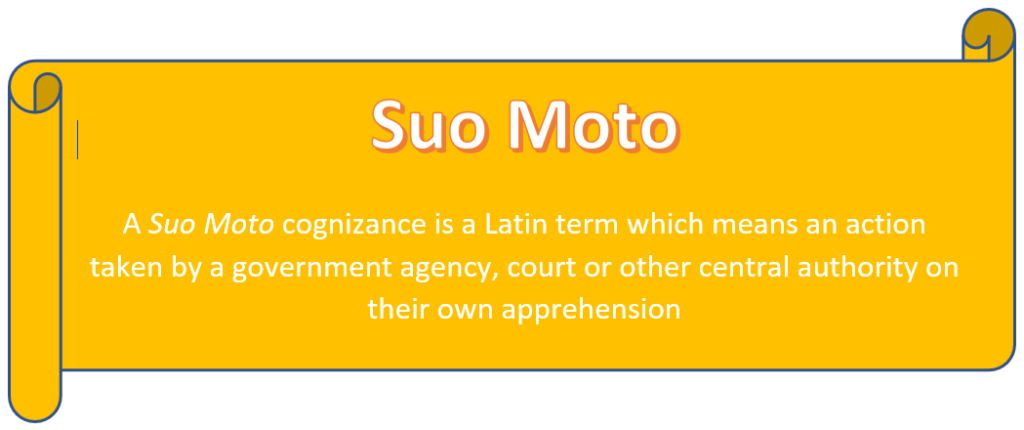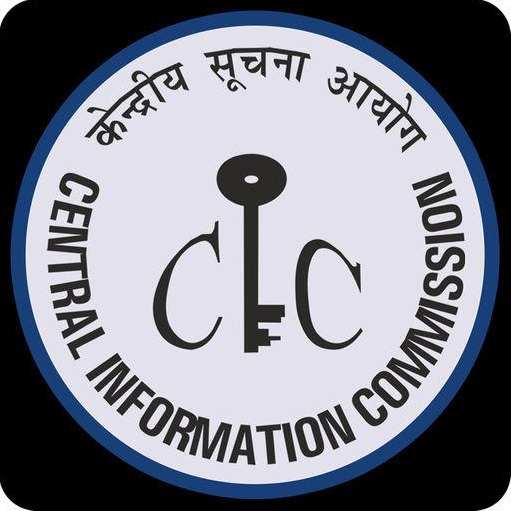In 2005, Indian citizens were empowered with the passing of the Right to information. Almost 17 years since then it has greatly contributed to improving the governance of the country and improving our political and civil rights. Today we can easily find many online tutorials to file an RTI as technology has brought our rights to mobile screens. RTI sites themselves provide a detailed SOP for filing an RTI. https://rtionline.gov.in/um_citizen.pdf
Filing an RTI might be simple but to exercise this right to its true potential we need to learn more about the provisions, penalties, precedents, and processes of the Right to Information Act, 2005.
Brief history
Sweden was the first country to pass Transparency law way back in 1766. For independent India, RTI was not an easy bill to pass for various reasons. Prior to RTI, Freedom to information Act was passed, but never saw light of day as it was a toothless tiger; unlike RTI with provision for penalty. It was result of decades of various Judicial activism. Some states even passed their own State RTI like Tamil Nadu in 1997, Rajasthan in 2000, Maharashtra in 2002 and others
People’s movement like Majdoor Kisan Sakti Sangathan, National Campaign for People Right to Information, Press Council of India (Justice P.B. Sawant draft) and many RTI activist played prominent role in shaping RTI.
RTI is appropriately named as right rather than freedom of information like done in other countries.
Landmark of Right To Information journey in India
- 1975: Supreme Court in Judgment of ‘Right to know’ is implicit in Fundamental Right of Section 19
- 1986: Right of consumers to be informed about products
- 1996: Justice P.B. Sawant Draft
- 1997: Shourie Draft Bill
- 2001: Parliament committee on RTI recommendations
- 2002: Freedom of Information Bill. President assent not given
- 2004: NCPRI sent draft under National Advisory Council
- 2005 June: President assent to RTI bill
- 2005 October: RTI act come to force
Aruna Roy was awarded Ramon Magsaysay Award for community leadership for her role in RTI movement MKSS

Scope and fundamentals of Right to Information Act
It must be remembered, RTI is an act with defined timeline, penalties and has been given roots in Fundamental right of Article 19 (a), Article 21 and Article 32 of Indian constitution. RTI is a relatively small act ranging up to 25 pages with only 31 Sections and 2 schedules as it is meant to be utilized by every citizen. Citizens must consider following things before filling an RTI request.
- Right of citizen:
- Only citizens of India have right to information, i.e., an organization (legal person) cannot seek information under RTI
- Fixed timeline:
- Following are important timeline in brief. (The period days are from the date of filling)
- Response: Information officer have 30 days to respond to an RTI. If information sought concerns the life or liberty of a person, it shall be supplied within 48 hours.
- Response against Section 24: 45 days
- Transfer of case: 5 days from receipt of application
- Following are important timeline in brief. (The period days are from the date of filling)
- Appeal:
- First Appeal: To reporting officer of Information Officer, within 30 days of response.
- Second appeal: To information commission, within 90 days of response from first appeal.
- Response of appeal: 30 days, in case of extended period, 45 days for both first and second appeal.
- Penalties Section 20: Rupees 250 each day till application is received or information is furnished, with maximum penalty of rupees 25,000/-.
- Fees: A fees of rupees 10 is required to file RTI request. However, fees many be demanded representing cost of providing information.
- Scope of information: RTI also imposes responsibility on citizens. Citizens cannot seek following:
- Frivolous queries, which do not qualify as information
- Ask hypothetical questions
- Interpretation of law
- Reason why certain things were done. (Information officer are not spokespersons)
- Ask or give opinions or suggestions
- Fabricating information
Salient feature of Right To Information
1. Preamble & Main purpose of Right To Information
Preamble spells out the tone and purpose of RTI and act as guiding light for courts when there is a conflict.
RTI is to set out practical regime of right to know
- Secure access of information under control of Public Authority
- Promote transparency, accountability, curtail corruption, inform citizen.
- Harmonize conflicting public interest in disclosure and exemptions
- Constitute Central Information Commission and State Information Commission.
2. Important definitions
Section 2 of RTI act provide definition of various important terms to simplify the act.
A. Competent authorities
Definition of Competent authority is given in Section 2e with context to Section 28 of the act which give competent authority to make rules.
B. Information and record
Act has provided an exclusive definition of information (Section 2f) and records (Section 2i). It has tried to include any material, written and electronic medium as information and record which has been made accessible through this act.
C. Right to Information
Section 2j define the rights which are provided by the act. It declares information held by public authorities as accessible. Right to information is itself an exclusive right which also includes:
- inspection of work, documents, records;
- taking notes, extracts or certified copies of documents or records;
- taking certified samples of material;
- obtaining information in the form of diskettes, floppies, tapes, video cassettes or in any other electronic mode or through printouts where such information is stored in a computer or in any other device
D. Public Authorities
Apart from definition given in Section 2h, courts have actually played far greater role in giving practical function to this definition. Many court precedents have given public authority a more dynamic and exclusive form, which in turn have empowered citizen in accessing various information even from non-government organization, which shall be discussed in details.
3. Public Authorities
RTI made information accessible under possession of Public Authorities. Therefore it is important to understand which institution qualify as Public Authorities. We might want information from an institution but it might not appear in RTI website while filing online application. That organization might appear as a private organization and RTI can be submitted to it by writing an application addressed to it.
Section 2h can even cover non-government organization as Public Authorities.
- 2018 CIC vs BCCI
BCCI was declared as public authorities as
- BCCI is a national body holding monopoly right to organize cricket events
- BCCI power over athletes is state like in nature
- BCCI receive tax concession and land subsidies
Test of Public Authority
Courts have tried to give test for public authorities. Following factors suggest if an organization is Aublic Authority or not:
- Link to government
- Provide public service or function of national importance with public finance
- State controls its ownership and inspect its performance
- Subject to CAG
- An NGO which is substantially funding from government
Note: Substantially funding is not defined by Supreme Court
- Institution with statutory power
- Parliament intent to cover the organization under the act
4. Suo moto disclosure
If you want information about a known Public Authority, probably it has already published the information through some medium; and why would they do so? Because RTI act demands so.

Section 4 of RTI not only instruct Public Authorities to properly maintain and catalogue records and information (Section 4.1), but also to disclose many parameters on its own, Suo Moto. You can revise Section 4.1.b and see if information you are seeking is on that list and then check website or other medium through which that organization might have published the information. Provisions of Section 4 reduce the requirement to resort to the act.
5. Right To Information Authorities
The act has given birth to following entities:
A. Central/state Information Commission (Details in 12.2)
- Chief Information Commissioner (Definition in 2d, details in 12.3)
- Central/state Information Commissioner
Qualification, appointment and tenure

- Are appointed and removed by President of India for central or governor of state (Section 14/16).
- Are persons of public eminence, with knowledge and experience of many fields (not necessarily of legal background).
- Holds office for 3 years of till age of 65 years and are eligible for reappointment once.
B. Office of Public Information Officer (Definition in 2c, details in 5.1)
- Central/State Public Information Officer
- Central/State Assistant Public Information Officer
Functions
- Designated by Public authorities at sub-divisional or other sub-divisional level.
- Deal with RTI request, receive, dispose information or refuse request
- Can seek assistant of any other office to discharge their duties
- Can transfer a case to other Public Authority of concern
Appealing Authority for Right To Information
In case citizens are dissatisfied with their RTI response for any reason, they have provision to appeal (Section 19).
Reasons for dissatisfaction
- Request rejected
- No response received (if no response is disposed with in time, the request is deemed rejected)
- Partial, incomplete or wrong response received
A. First appeal
Citizen aggrieved by a RTI response can appeal to officer who is senior to the rank of Public Information Officer in the Public authority within 30 days.
B. Second Appeal
Citizen can go for second appeal to Central/state Information Commission within 90 days of response from first appeal.
Information Commission can perform following function:
- Direct the public authority to provide access to the information
- Can appoint information officer if not done
- Can make rules for maintenance, management and destruction of records
- Impose penalties on Information Officer under act (Section 20)
- Reject application
C. Disposal of Appeal
Appeal has to be disposed within 30 days, or extended period not exceeding 45 days.
D. Courts
Citizen still aggrieved by decision of Information Commission, can move to courts under Article 32 to Supreme court or high court under Article 256, as RTI has been linked to fundamental rights.
Exemptions from Act
It is well known fact related to Indian constitution that no right is absolute and constitution has complimented each right with reasonable restrictions. So is the case with Right To Information. Following sections impose exemptions from disclosure of information:
A. Section 8: Grounds for non-disclosure of information.
It includes information:
- Which may affect security, sovereignty, scientific or strategic interest of the country or incite violence.
- Which are forbidden by any court, held by government in confidence from foreign government
It must be remembered many sub clauses of section 8 are subject to test of larger public interest which shall be discussed soon.
B. Section 24 and Schedule 2: Exempted Public authorities
Public authorities listed in Schedule 2 of the act are exempted from RTI act. This list mostly includes intelligence agencies. Section 24 gives power to parliament to include Public Authorities in this list. However, under Section 24; information related to corruption or human rights violation must be disclosed after approval of Central Information Commission within 45 days of receipt of request. Presently 22 public authorities are listed in Schedule 2
C. Section 9: Copyright Information
Request can be rejected if it involves infringement of copyright.
D. Section 11: Confidentiality of third party
Public Authorities hold information of private parties in various capacity, and citizen may request that information. Under section 11, Public authorities has to inform if a request involves a private party will weight their response while deciding disclosure of the information.
Caveat of Public interest in Right To Information:
Just like no right is absolute, similarly no restriction is absolute either.
Right to information in its various section mentioned; if a larger public is involved a restriction can be overruled. So, if a Public Authority deny access to information for any reason, citizen can follow hierarchy of appealing authorities. Courts have given many precedents when they have overruled section 8 and others providing access to information when they reached judgement that a larger public interest is involved.
Discover more from Talking Concept
Subscribe to get the latest posts sent to your email.

